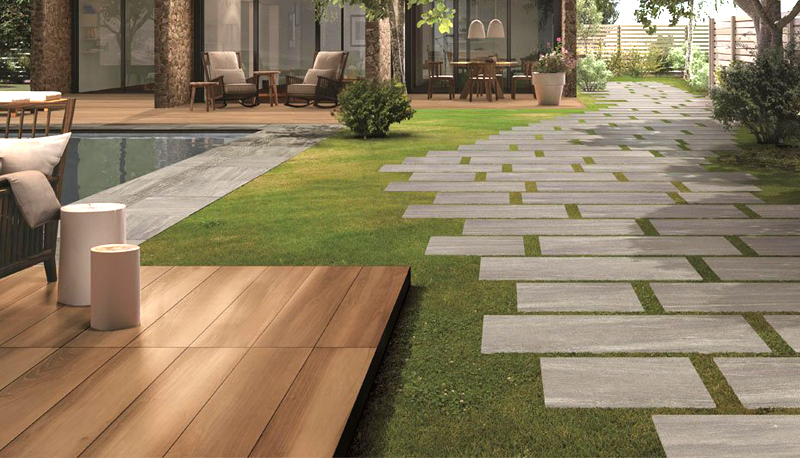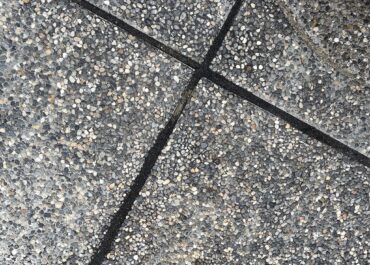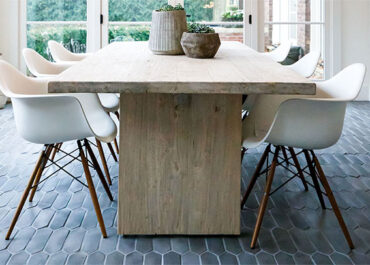
The use of porcelain pavers is growing more and more each year. Homeowners are starting to see the many benefits of this cutting-edge material and choosing to invest in it over more classical options. One of these benefits are the easy installation, so in this article we’re going to present a quick guide on how to perform a dry installation of porcelain pavers on sand.
Aside from the easy installation, porcelain pavers also are incredibly easy to clean and maintain. They are resistant to most things that would normally be a problem to other materials, like moss, mold, and fade due to sunlight.
For that reason it is considered a premium choice of paver material. One that pays itself overtime thanks to its resistance and low-cost maintenance.
Before starting with a guide on how to make the dry installation over sand, we will expand a little on the benefits of choosing porcelain pavers.
Can You Install Porcelain Pavers on Sand?
Yes. You absolutely can. And is it highly recommended you do so.
Installing porcelain pavers on sand is recommended for small patios and walkways. Also, as we are going to discuss on the installation guide, it is a good choice if you plan to install it on level ground.
An installation over sand is highly preferred by the industry professionals. First, for its efficiency and cost benefit. Second, for the fact that you don’t compromise the pavers themselves. If anything happens, they can be easily moved and replaced.
Porcelain Pavers on Sand: The Benefits of Porcelain
The unparalleled visual appeal of the porcelain is created right at its fabrication moment.
Porcelain is made with a combination of materials, mainly mullite, sand, and clay. These materials are mixed together and cooked at temperatures as high as 1230℃. This process is called vitrification and creates an incredibly sturdy material.
Thanks to this process, porcelain pavers present numerous benefits such as:
- No sealing and stain resistant
Since they come out of the oven already non-porous, sealing is not needed when working with porcelain pavers. Porcelain is naturally resistant to stains, which already helps a ton during the cleaning process. - Resistant to moss and mold
Moss and mold are old enemies of anyone who owns pavers. The humidity of the soil and the tight spaces between pavers are a perfect environment for them to grow. However, porcelain is so dense that they can never develop fully on its surface. - Shock resistant
Being such a dense and resistant material, porcelain is virtually immune to scratching and mechanical shock. - Resistant to temperature changes
Freeze-thaw cycles can be a problem in regions with extreme weather conditions. Well, porcelain is unaffected by that. Again, this is due to how dense porcelain is and the high temperatures in which it is fabricated. - Low-cost maintenance
That is an important point that cannot be understated. Porcelain pavers are extremely easy to clean. A simple mild detergent in combination with a pressure washer already does the trick. A regular cleaning at least once a month is already enough to make sure your porcelain pavers will last for years and years.
Now that we talked about the benefits, let’s move on to the quick guide for the dry installation.
Installation of Porcelain Pavers on Sand
Porcelain pavers can be installed in several ways, such as with mortar, directly on grass, or over a decking. For now we will focus on the installation on sand, which can happen in two different ways: over a flexible base, or over a pure sand base.
The flexible base consists of a combination base material and sand, an old friend for those with paver experience. The pure sand dismisses the need for a base material and goes straight for the sand.
Let’s start with the flexible base first.
Flexible Base Installation
To perform this installation, first you’re going to need to dig. This dig need to be at least 6″ deep and with a slope of 1″ every 10ft away from any buildings.
After the digging, you cover the entire hole with filter fabric and then fill it with your base material of choice. The most common ones being crushed gravel and compacted soil. Compact the base with a hand compactor before moving on.
With the hole filled, you’re going to place your edge restrains, hammering them directly into the ground. The height of these edge restrains should be equal to the thickness of the pavers plus 3/4”.
With the edges placed, fill the area with sand and, with the help of a screed guide of 3/4”, level the area. In the end, you should have a perfectly leveled 3/4” layer of sand in which to place your pavers.
Now is just a matter of placing the pavers in place with the help of 3/16″ spacers. When is all set, place polymeric sand over the space between the pavers and sweep them away to the grout lines, removing the excess afterwards.
Pure Sand Installation
First, a quick disclaimer.
This installation is recommended when you want your pavers to be on “ground level”. Although installing pavers directly on sand is safe for small areas, a better option would be to follow the flexible base installation and dig a few inches more to dismiss the edge restrains and set the pavers on ground level.
But the process is basically the same, except you will have to dig much less.
The digging in this case can be between 2-4″. Too much will have make no difference, too little can lead to the accumulation of water.
You’re still going to mind the slope, and still cover the hole with filter fabric before adding the sand.
Afterwards, you simply lay the sand, accounting for the height of the pavers, creed the area and place the pavers, again with the help of 3/16″ spacers.
Add the polymeric sand to the grout lines just like previously mentioned, and you’re good to go.

Professional Installation
Porcelain pavers are a growing trend. With several benefits that go beyond the visual appeal, they are worth every penny of the investment.
On our long 14 years history here at Eagle Pavers, clients that decided to go with it have never regretted it and almost always used it again in other projects.
If you’re around the Sarasota area and want to be one of those lucky clients, don’t hesitate in giving us a call anytime at +1 941-210-4192 or reach us through our email at sales@eaglepaver.us. We would be happy to hear from you and help you with any pavers supply need you might have.




